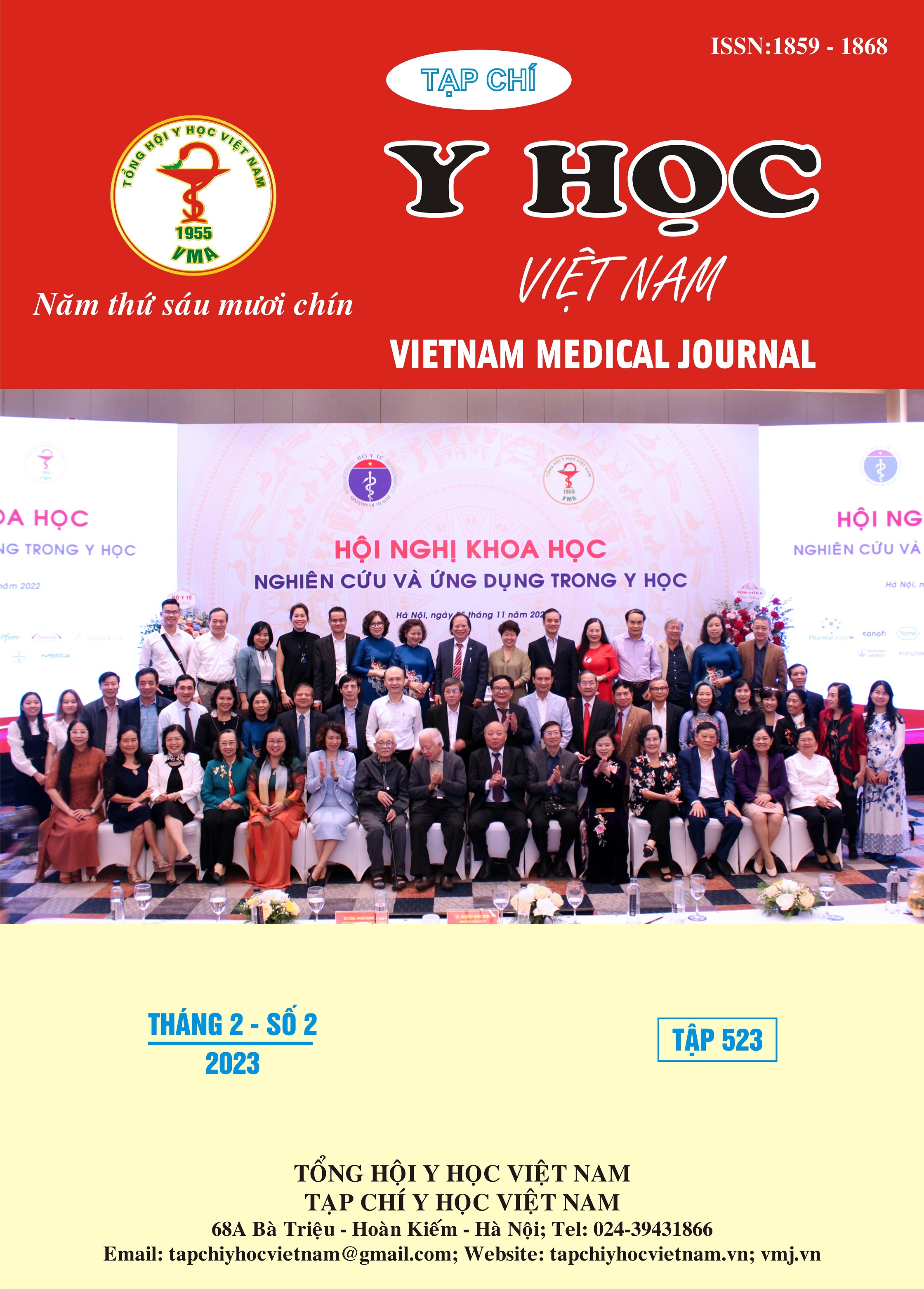HUMAN RESOURCES OF RADIATION ONCOLOGIST IN NORTHERN PROVINCIAL HOSPITALS OF VIET NAM
Main Article Content
Abstract
Introduction: The study aims to describe the current situation of medical personnel working in radiation therapy at provincial hospitals providing radiation oncology treatment in the Northern region of Viet Nam. Methods: cross-sectional study design, interviewing all 99 doctors working in radiation therapy at all 17 provincial hospitals with radiation oncology in the North ò Viet Nam. Results: a total of 99 doctors worked in radiation therapy at provincial hospitals, median was 03 (IQR: 03-07) doctors/hospital, male accounted for 68.69%, mean age is 32.9 (SD: 7.3), 88.89% of doctors work in public hospitals, mainly in the provinces of North Central and Red River Delta, only 48/99 (48) ,48%) doctors have postgraduate training, of which 40/48 are oncologists, the average number of years of experience in radiation therapy is 4.9 (SD: 4.8), Only 64/99 (64.65%) doctors received additional training in radiation therapy, and 93/99 (93.9%) doctors wanted to continue receiving additional training in radiation therapy. Conclusion: There is a shortage of human resources for radiation oncology, especially trained personnel specialized in radiation therapy, and the need for additional training is high.
Article Details
Keywords
radiation therapy, radiation oncologist, radiation therapy training.
References
2. IAEA. IAEA Syllabus for the Education and Training of Radiation Oncologists. IAEA; 2009.
3. European Union of Medical Specialists. European training requirements in radiation oncology/radiotherapy. Accessed September 16, 2022. https://www.uems.eu/__ data/assets/pdf_file/0013/110371/ETR-Radiation-Oncology-Radiotherapy.pdf
4. JBMP. Medical Physics Education Curriculum Guidelines 2020. Accessed September 19, 2022. https:// www.jbmp.org/course_educational/institution/
5. IAEA. Radiotherapy in Cancer Care: Facing the Global Challenge. IAEA, International Atomic Energy Agency; 2017.
6. JBMP. Number of medical physicists by region, gender, and age group (based on data from certified medical physicists as of March 14, 2018). Published 2022. Accessed September 14, 2022. https://www.jbmp.org/certification/list/
7. Smith BD, Haffty BG, Wilson LD, Smith GL, Patel AN, Buchholz TA. The Future of radiation oncology in the United States from 2010 to 2020: Will supply keep pace with demand? Journal of Clinical Oncology. Published online October 18, 2010. doi:10.1200/JCO.2010.31.2520
8. Dubois N, Nguyet Diep A, Ghuysen A, et al. Training of radiotherapy professionals: status, content, satisfaction and improvement suggestions in the Greater Region. BMC Medical Education. 2022;22(1):485. doi:10.1186/s12909-022-03567-5
9. Bibault JE, Franco P, Borst GR, et al. Learning radiation oncology in Europe: Results of the ESTRO multidisciplinary survey. Clinical and Translational Radiation Oncology. 2018;9:61-67. doi:10.1016/j.ctro.2018.02.001
10. ABR. Certification Requirements. The American Board of Radiology. Published 2022. Accessed October 7, 2022. https://www.theabr.org/ radiation-oncology/initial-certification/initial-certifications-requirements


